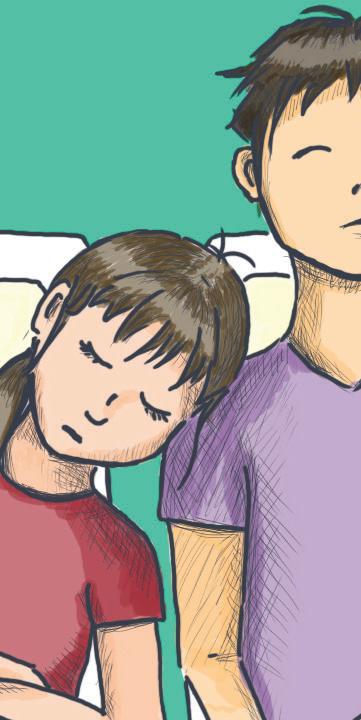6
26 MAY 2020
Who Canada’s healthcare system leaves behind Daniel Li POLITICS Canada’s publicly-funded, single-payer healthcare system is known as one of the best in the world. With it, the health of each Canadian and permanent resident is insured. Under our healthcare system, each visit to the doctor is publicly paid for—there’s no need to worry about copayments or paying out-ofpocket. For nearly half a million people in Canada, however, this isn’t the case. Canada, as a signatory of several UN conventions, affirms the human right to good health. Yet, in spite of this, a 2016 report by the Wellesley Institute estimates that up to 500 000 people in Canada don’t have access to health coverage. Who we’re not looking out for Immigration status is the single biggest obstacle to accessing health insurance in Canada. It’s estimated that there may be more than 500 000 undocumented residents in Canada, which means they don’t have authorization to live in Canada. Many undocumented residents arrive in Canada through legal means, but their immigration status may have changed. A report by the City of Toronto Medical Officer of Health cites expired visas, denied refugee claims, and sponsorship breakdowns as typical reasons for people losing their immigration status. CBC Radio followed the story of Grace, who legally came to Canada in 2001. Before Grace could complete the immigration process, she lost her job. Over the past 18 years, Grace has worked under the table jobs, the same ones that are highly susceptible to exploitative practices. In 2012, Grace had to get a pacemaker and ended up having to pay tens of thousands of dollars out-of-pocket. Last August, she received news of a breast tumour, with treatment likely to cost more than $10 000. In 2015, more than 200 000 temporary workers, international students, and newly-arrived permanent residents lacked access to provincial healthcare. More than 20 years ago, temporary residents and international students had provincial health coverage. Then, in 1994, the provincial government imposed a three-month wait period for newly-arrived residents and removed health coverage for temporary residents and students. The three-month wait period, which prevents health coverage until the individual has been in the province for three months, also applies to Canadian citizens if they’ve been out of the country for 212 days. Luma, a 4-year-old Canadian citizen, had left the country with her mother to visit family in the Middle East. Due to armed conflicts, Luma and her mother were unable to return home and their three week visit became longer than seven months. Upon arriving back in Canada, Luma’s face had been infected and when Luma’s mother took her to the hospital, she was denied coverage. When asked about abolishing the three-month wait period in 2011, the provincial government cited that the policy saves $90 million a year and there were no plans to change it. However, as the Wellesley Institute points out, the amount saved wasn’t transparently calculated and it fails to consider the higher costs needed to treat people who become sicker over
They’re non-profit organizations that receive some provincial funding. In addition, there are clinics available where a health card is optional. To name a couple, the Toronto District School Board offers pediatric and optometry clinics for newcomers and Women’s College Hospital runs the Bay Centre for Birth Control. On the federal level, the government supports incoming refugees through the Interim Federal Health Program (IFHP), which covers basic healthcare costs for refugees coming to Canada. To address the issue of missing identification documents, the Ministry of Health and Long-Term Care has offered identification clinics in the past. Today, some community health centres have replaced these clinics, offering to provide assistance with obtaining the documents needed to get healthcare coverage. Most of these services are limited by lack of funding, however. Community health centres are typically at capacity and have certain requirements that new patients need to meet. Clinics such as the CCIRH lack the necessary funds to operate at full capacity. Dr. Caulford, who works at the CCRIH clinic, has said “[Funding] runs out about five months into the year … we’re going on fumes for about seven months.” The IFHP has its own set of problems. In 2012, the Conservative government made significant cuts to the program, leaving many refugees without health coverage. Protests organized by healthcare providers erupted throughout the country. Although the cuts have since been reversed, there’s been confusion about the state of the program. In order to be paid COURTESY OF ANNA PAN by the program for seeing refugee patients, healthThe gaps in Canada’s healthcare system must be addressed care practitioners need to enrol with the program. to ensure all Canadians, regardless of formal status, are Some clinics continue to deny services for refugees provided the human right to good health, writes Daniel Li. as they’re under the assumption that IFHP coverage the three-month period. It also excludes any cost as- hasn’t been restored. Even when practitioners are sociated with untreated infectious diseases that can registered with IFHP, there have been complaints about the lack of information about what services are spread to communities during that time. The wait period also affects nearly 120 000 tem- covered. porary foreign workers (TFWs) in Ontario. Although TFWs pay the same taxes most ordinary Canadians What can be done do, they arrive in the country without health cov- It’s clear a lot can be done to improve the healthcare erage for three months. Some may never get health coverage of uninsured people in Canada. A good start coverage, as some workers can have multiple job con- would be reforming the three-month wait policy. Groups have been lobbying for the elimination of tracts a year, with each one allowing them to work for the three-month wait period, stating the cruel irony less than three months at a time. Canadian citizens that are homeless and/or have of denying healthcare coverage. “You could say it’s mental health conditions also make up part of the even fraudulent to invite people to Ontario and then population of uninsured people. Often times, these say to them when they get here, ‘By the way, don’t get individuals aren’t able to provide the documents sick for a few months’”, said Dr. Bob Gardner from needed to identify themselves and subsequently lose the Wellesley Institute. The wait period can also discourage people with healthcare coverage because of it. infectious diseases from getting treatment, leaving cases of infectious disease unseen by public health What’s being done At the moment, there are several healthcare services officials. The current provincial government is more than aware of this. This March, in response to the that uninsured people can access. The Canadian Centre for Refugee and Immigrant COVID-19 pandemic, the Government of Ontario Healthcare (CCIRH), located in Scarborough, was announced that the three-month wait period will be Canada’s first medical clinic dedicated solely to sup- waived and the cost of COVID-19 related services porting refugees and immigrants. Ever since 1999, would be covered for uninsured people. Luma eventually got treated for her infection, all the CCIRH has had more than 50 000 visits, 31% of which are from uninsured people. The CCIRH es- thanks to volunteer healthcare providers. As one of timates that due to the efforts of their organization, the wealthiest countries in the world, however, there they’ve saved over $24 200 000 in healthcare and re- shouldn’t be a need to rely on volunteers to treat people that offer so much to our country, both socially search costs. Scattered throughout the province, community and economically. At what point does someone behealth centres offer primary healthcare for all indi- come “Canadian enough” to have their right to good viduals in their community, including the uninsured. health?














